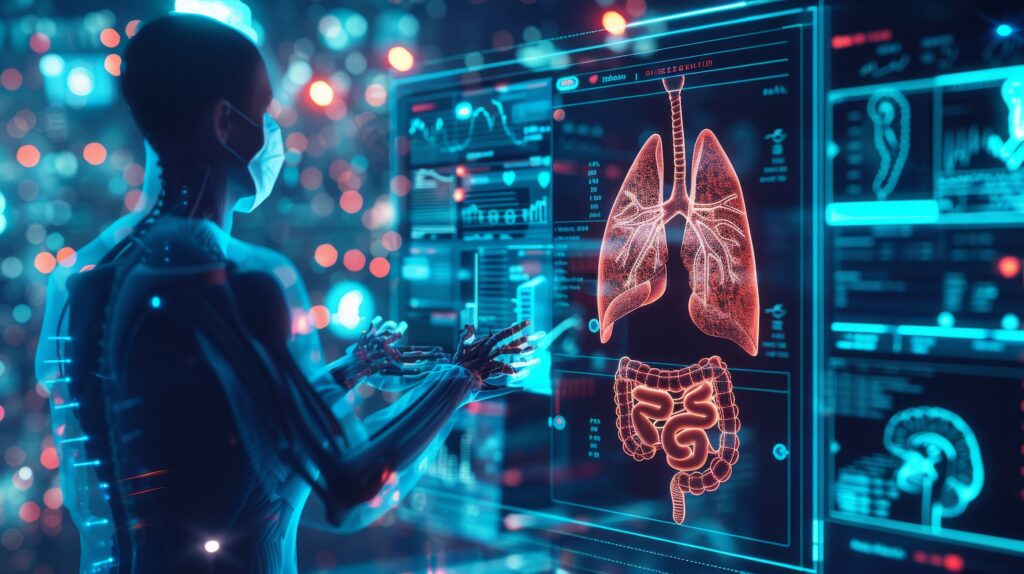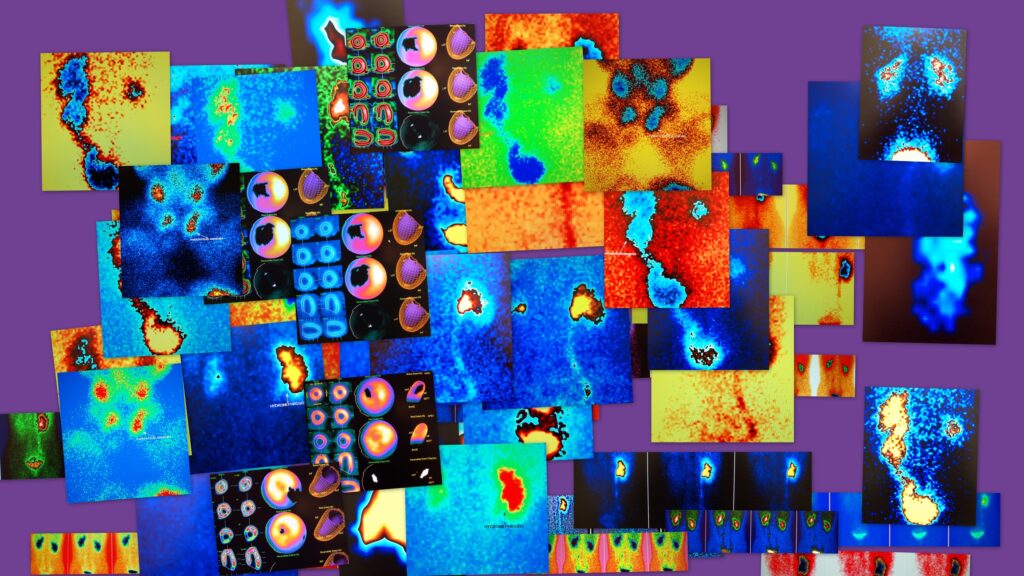Summary: In the contemporary era of healthcare innovation, chat‑based AI agents are revolutionising medical imaging. These sophisticated systems support radiologists by interpreting scans, generating reports, and enabling faster, more accurate diagnostics. The article gives a brief outline of their current roles, technological underpinnings, benefits, limitations, and future potential within clinical workflows.
Keywords: Medical imaging, AI chat agents, diagnostic support, radiology workflow, clinical decision support, multimodal agents.
What Are Chat Agents in Medical Imaging?
In 2025, medical imaging is undergoing a profound transformation. The integration of chat agents based on artificial intelligence has shifted from pilot research to real‑world implementation, where they serve as interactive assistants within radiology departments. As human‑in‑the‑loop tools, these agents support rather than replace expert radiologists, reinforcing diagnostic accuracy while improving efficiency.
Chat agents combine large language models with image‑analysis tools. They can interpret text and visual input, generate clinical summaries, suggest diagnostic possibilities, triage cases, and draft structured reports. Platforms are emerging that enable multi‑modal analysis with layered decision logic, enhancing interpretability and reducing error risk.
These agents often coordinate multiple specialised agents—such as vision models and diagnostic LLMs—under a supervising director agent, emulating collaborative reasoning found in multidisciplinary teams. They also perform tasks such as protocol selection and referral triage, based on preliminary symptom input or clinical metadata.
Operational Roles of Chat Agents in Imaging Workflows
Triage and Prioritisation
AI‑powered triage agents classify imaging studies according to urgency—from normal to critical—ensuring life‑threatening conditions are flagged for immediate review. This approach improves response times in emergency radiology and reduces delays in patient care.
Image Interpretation and Detection
Agents analyse chest X‑rays, CT scans, MRIs, and more to detect pathologies such as lung nodules, brain haemorrhages, pulmonary embolism and early‑stage cancers. They provide visual overlays and confidence scores to aid radiologists’ review, supporting faster and more reliable detection.
Report Generation and Structured Summaries
AI chat agents accelerate report drafting by synthesising findings into coherent, standardised reports. This alleviates repetitive writing tasks and allows radiologists to focus on judgment calls, oversight, and complex cases.
Multimodal Clinical Reasoning
AI assistants integrate image features, patient history, and diagnostic metadata. They offer explainable outputs by visually grounding anatomical sites, quantifying uncertainty, and supporting prognosis—surpassing earlier single‑agent tools in performance and clinician trust.
Interactive User Interfaces and VR Integration
Emerging systems enable speech‑based interaction with 3D volumetric segmentation in virtual reality. Radiologists can refine segmentations with prompts, visualise pathology in true scale, and operate with high usability.
Benefits to Clinicians and Patients
Enhanced Accuracy and Speed
Agents identify subtle abnormalities that might be overlooked, and reduce diagnostic delays through automated flagging and decision support. Many AI models can match or surpass human performance in specific detection tasks, helping clinicians provide timely and precise care.
Optimised Workflows and Cost Efficiency
By automating routine reads, triage, and reporting, chat agents free up radiologist time. This helps healthcare services reduce backlogs, deliver faster results to patients, and cut operational costs over time.
Support for Overwhelmed Workforce
With staff shortages common in radiology, chat agents extend diagnostic reach by handling repetitive image analyses, allowing experts to concentrate on complex cases and oversight tasks.
Trust and Transparency
Explainable AI features—such as confidence metrics, visual overlays, and uncertainty flags—enhance clinician trust and oversight, creating a safer diagnostic environment.
Challenges and Limitations
Regulatory and Ethical Considerations
Only some tools have received regulatory clearance. Adoption can vary by region, and approvals often lag behind innovation. Ensuring that safety and reliability standards are met remains essential for widespread use.
Data Bias and Representativeness
AI models trained on limited or unrepresentative datasets risk underperforming across diverse populations. Radiologists remain the final authority to ensure patients are not misdiagnosed based on skewed models.
Integration and Interoperability Issues
Successful integration demands seamless compatibility with PACS, RIS, EHRs and standard interfaces. Misaligned systems can create data silos and limit the value of AI workflows.
Need for Human Oversight and Training
While AI agents improve efficiency, they must be used under expert supervision. Clinicians require training to interpret outputs, assess guidelines, and manage exceptions. Mis‑prompted or misinterpreted AI outputs can reduce accuracy.
Emerging Platforms and Case Examples
Advanced Diagnostic Platforms
Some platforms embed algorithms into imaging workflows, supporting hospitals in real time by flagging acute conditions across CT and X‑ray imaging.
Multimodal Frameworks
New frameworks orchestrate multiple specialist agents coordinated by a director AI. Each agent represents a clinical role, enabling more nuanced, team‑like diagnostic outputs with reduced hallucinations.
Assistive Systems with Uncertainty Quantification
These clinician‑centric agents combine text and image interpretability, quantify uncertainty, and support prognostic prediction across multiple modalities, outperforming earlier medical LLMs.
VR‑Enabled Systems
With voice‑driven image interaction and segmentation in VR, these systems offer a human‑in‑the‑loop tool for precise 3D map generation of pathology and enhanced anatomical understanding.
How Implementation Works in Clinical Practice
Hospitals typically begin with limited roll‑outs in select radiology divisions, gradually expanding from triage or administrative support (such as report generation) to clinical decision support in more complex imaging. Data governance, privacy compliance, and staff training are essential prerequisites.
Successful programmes coordinate IT, clinical staff, and administrative leadership to ensure integration with existing IT infrastructure and alignment with workflow needs. Monitoring dashboards track performance, accuracy, and adherence to ethical and safety standards.
The Future: Toward Collaborative, Predictive Diagnostics
Federated Learning and Model Sharing
Rather than transferring sensitive patient data, federated learning enables multiple institutions to train shared AI models securely. This enhances generalisability and privacy protection.
Personalised Medicine and Predictive Prognosis
Agents will increasingly combine imaging, genomics, and clinical history to predict disease progression, recurrence risk, and treatment response—elevating diagnostics from detection to predictive decision support.
Robotics, AR and Surgical Planning
AI agents are beginning to integrate with robotic systems and augmented reality overlays, guiding interventional procedures or surgical planning in real time.
Intelligent Health Ecosystems
Technology companies are investing in broader health AI platforms integrating image interpretation, documentation, triage, and clinical co‑pilots—creating unified AI ecosystems within hospitals.
Ethical and Cultural Considerations
Trustworthy deployment of AI agents requires transparency, auditability, and explainability. Patients and clinicians must understand how diagnoses are generated, where uncertainty lies, and who is responsible for final decisions. Regulatory frameworks must evolve accordingly. Training programmes for clinicians must emphasise safe, prompt use, interpretation, and recognition of AI limits, avoiding risks linked to misuse or overreliance on automated advice.
AI Chat Agents as Diagnostic Allies
Chat agents are ushering in a new era for medical imaging—one where smart, interactive colleagues boost accuracy, speed, and efficiency. They support radiologists in triage, detection, reporting, and decision support, enhancing care while preserving human oversight. As models evolve and trusted frameworks gain traction globally, the future points toward seamless human‑AI collaboration in healthcare’s diagnostic core.
The success of this transformation depends not only on technological prowess, but on careful integration, proper clinical governance, ethical deployment and clinician education. When embraced responsibly, chat agents in medical imaging promise to empower radiology practices, improve patient outcomes, and reshape diagnostic medicine in the years ahead.
Disclaimer
The information presented in The Role of Chat Agents in Medical Imaging is provided for general informational and educational purposes only. It should not be considered medical advice, guidance for clinical practice, or a substitute for professional judgement by qualified healthcare practitioners. While every effort has been made to ensure accuracy and currency at the time of publication, Open Medscience makes no representations or warranties regarding the completeness, reliability, or suitability of the content for any particular purpose.
Artificial intelligence in medical imaging remains an evolving field. Regulatory approvals, safety standards, system capabilities, and clinical outcomes may vary by jurisdiction, institution, and individual use case. The article discusses potential benefits and limitations of chat agents but does not endorse or recommend any specific technology, vendor, or approach.
Decisions regarding patient diagnosis, treatment, or care must always be made by appropriately trained medical professionals who can assess the full clinical context. Open Medscience accepts no liability for any direct or indirect loss, damage, or adverse outcome resulting from reliance on the information contained in this publication.
You are here: home » diagnostic medical imaging blog »



